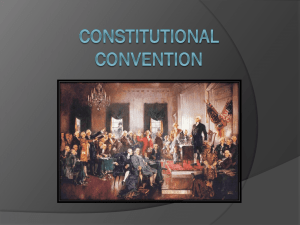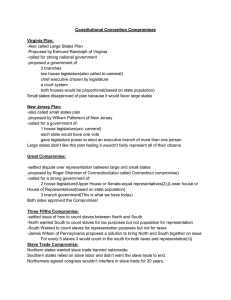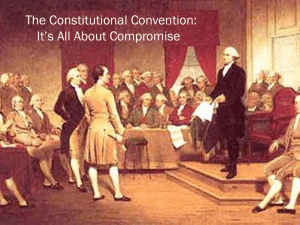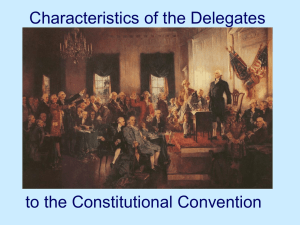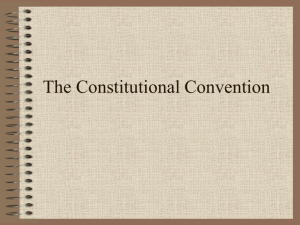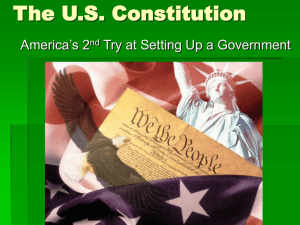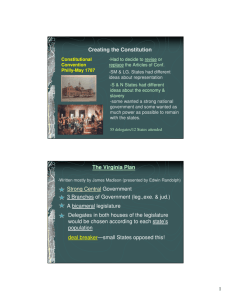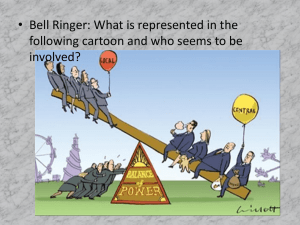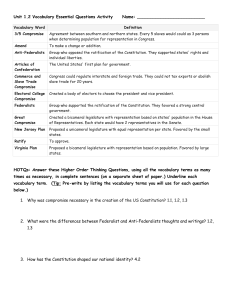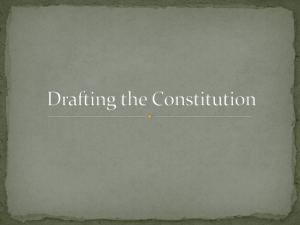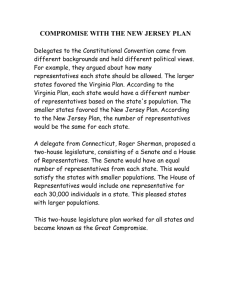Principles and Compromises of the Constitutional Convention
advertisement
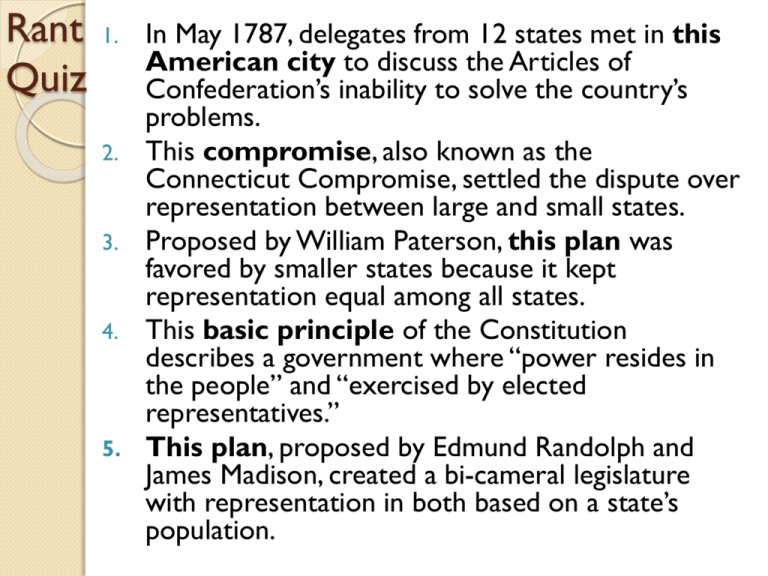
Rant Quiz 1. 2. 3. 4. 5. In May 1787, delegates from 12 states met in this American city to discuss the Articles of Confederation’s inability to solve the country’s problems. This compromise, also known as the Connecticut Compromise, settled the dispute over representation between large and small states. Proposed by William Paterson, this plan was favored by smaller states because it kept representation equal among all states. This basic principle of the Constitution describes a government where “power resides in the people” and “exercised by elected representatives.” This plan, proposed by Edmund Randolph and James Madison, created a bi-cameral legislature with representation in both based on a state’s population. Principles and Compromises of the Constitutional Convention The Miracle at Philadelphia The Philadelphia Convention May 1787 – September 1787 After Shays’ Rebellion (and the threat of others) delegations from 12 of 13*states met in Philadelphia. Of the 55 delegates, most were wealthy planters, lawyers and merchants. These men included Ben Franklin, Alexander Hamilton, James Madison and GW. Jefferson and Adams were NOT there. Jefferson was in France and Adams was in England working as ambassadors. The delegates quickly agreed: 1) Articles needed to be changed 2) Secrecy must be kept and 3) GW should be president of the convention. Competing Plans for the Government Virginia Plan (aka the large state plan) -Proposed by James Madison (from VA) -Called for a bi-cameral (two house) legislature. -In both houses, the Senate and the House of Representatives, the number of a states’ representatives determined by a state’s population. New Jersey Plan (aka the small state plan) -Proposed by William Paterson (from NJ) -Called for a uni-cameral (one house) legislature. -Regardless of population, each state would get one vote in Congress. - This plan was the same as the Articles except it gave more power to Congress. A Bundle of Compromises The Great Compromise (aka The Connecticut Compromise) -Proposed by Roger Sherman (from CT) after weeks of heated and angry debates between small and large states. -Created a bi-cameral legislature. -The House of Representatives (lower house): states have number of votes based on population. -The Senate (upper house): states have equal number of votes (2 each) regardless of size. Three-Fifths Compromise -Only 3/5 of a state’s slave population would count as population. Southern states wanted all slaves counted and Northern states wanted no slaves counted. WHY? Slave-Trade Compromise -Congress could not regulate or interfere with the slave trade for twenty years (until 1808). The Principles of the Constitution Republicanism The belief that government should be based on the consent of the people. “We the people, in order to form a more perfect union . . .” Federalism (Division of Power) a system of government where power (sovereignty) is divided between a national (or federal) government and local (or state) governments. These powers are clearly listed in the governing document – Delegated, Reserved and Concurrent Powers. The Principles of the Constitution Separation of Powers An organization of government where its powers are divided among different branches. This principle ensures that no one group has too much authority or responsibility. Legislative (law making) branch, Executive (law enforcing) branch and Judicial (law interpreting) branch. Checks and Balances A system that governs how each branch of government will interact with each other. This principle ensures that no one branch gains too much power. Executive can “check” the power of the Legislature by veto. Legislative can “check” the power of the Executive by overriding the veto. Judicial can “check” both branches by declaring their acts “unconstitutional”
